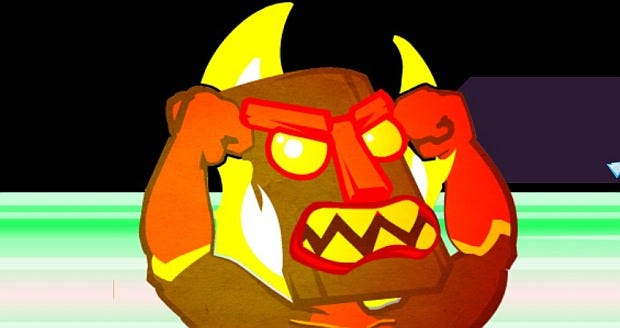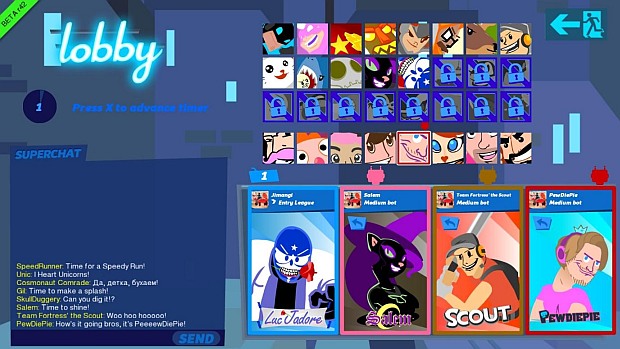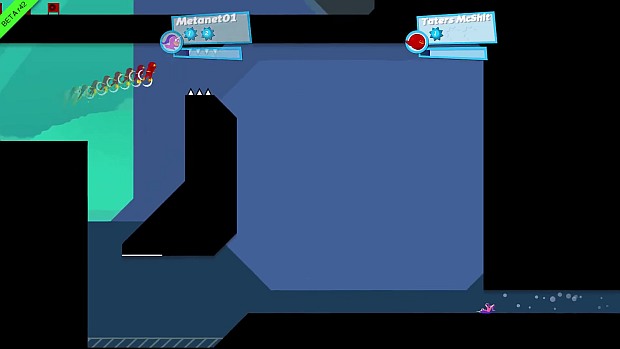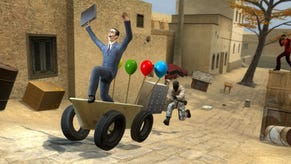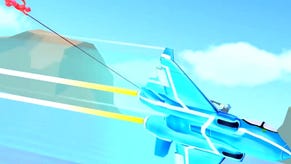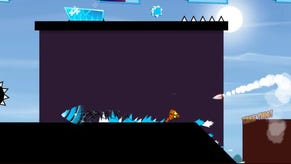SpeedRunners Is A Great Example Of Early Access Development Benefitting A Game And Its Players
Quick Progress
SpeedRunners [official site] had my attention at the mention of walljumping and grappling hooks. Two years later and the racing platformer, still in Early Access, has grown more than I ever expected. It's officially recognised by the eSports League and it’s been downloaded over a million times. This is a look at how SpeedRunners has progressed since its initial Early Access release, and why it stands as a shining example of the development process used correctly.
SpeedRunners might have released with just three maps but, crucially, what was there at the beginning was already satisfying. Too many developers release a game with plans to add the fun later. Early Access is littered with projects asking players to pay to run around their huge yet empty expanse of grassland, with very little to do except starve to death and get stuck in walls. SpeedRunners' mechanics - which are like Bionic Commando meets Micro Machines - were already entertaining at its core.
SpeedRunners is very thin on story, as it should be. Players assume the roles of superheroes and supervillains scrambling to be the first to reach an unspecified disaster. What this translates to is two to four players running laps around a side-scrolling level, picking up random items, saving and deploying boosts, swinging from ceilings and sliding up walls to try and grab the lead. The camera zooms out as players get further apart until eventually the player who fell furthest behind is knocked out and the last person standing gets a point. The winner is the first to reach three points. The game is incredibly simple, making it easy to pick up and play, like the best party games. Like the best competitive games though, the skill ceiling is high and there’s plenty of intricate, advanced manoeuvres players can learn.
After an hour or two of swinging from the ceiling you begin to realise that if you launch your grappling hook at the right angle you can swing with far more momentum, flinging yourself forwards at high speed. With the slide button not only can you stagger your opponents for a split-second, you can also dodge the golden hooks that players can find in item boxes - though doing so slows you down. You don’t want to be slowed for any longer than is necessary.
In SpeedRunners, appropriately enough, your speed is a resource. The maps are full of ways to gamble with your speed. You might need it to clear a gap or maintain your momentum as you slide up a vertical wall. Most levels have multiple routes through them, with shortcuts putting precious seconds between you and your competitors. Some even lay traps on the other routes or block them off. These shortcuts have risks though. For some the only loss is wasted time as you misjudge a swing and slam into a wall or trip over obstacles, but others contain lasers or spikes which, in competitive modes, will kill you outright.
When I first started playing SpeedRunners there were three maps. Now there are fifteen, with over 10,000 user-made levels on the workshop. In 2013 there were four characters. Now there are 32, not including re-colours. DoubleDutch have also added more items, ranked play, several mutators and a small campaign (which amounts to a series of time trial levels).
It's not all been about growth, however: elements of the game both big and small are frequently tweaked and updated based on feedback from the community. SpeedRunners is one of the few games for which the developers dare to tread into their own Steam forum, and I have discussed bugs and mechanical problems there before and received quick replies from the game's team.
One of the biggest forum debates was over the changes made to spikes and lasers last year. Where previously they would immediately knock a player out for the round, they would now only disable them for a few seconds. Many felt this made things too easy as well as being frustrated that the change broke a lot of community-made maps. Not long after the update, following discussion among the community, lethal spikes became an option in the game menu that could be toggled and the norm for competitive and ranked play. This is one of many examples of the developers using the early access model to build a better game for everyone.
Earlier this month it was announced that SpeedRunners is now an official ESL esport. I can’t think of a more fitting game. The brilliance of SpeedRunners is in the slim divide between the rookie and the pro. I’ve watched the videos of the recent ESL finals and it’s remarkable how similar the matches look to the ones I’ve played with friends. The players in the finals probably have many hundreds of hours of experience whereas none of us are nearing triple digits, yet our games seem very similar. You definitely couldn’t say this about Dota. I played over five hundred hours of Dota 2 but the matches in the International almost seem like they’re from a different game. A spectator with no experience would have no chance of comprehending what was going on. The same goes for games like Street Fighter with its combos, invincibility frames and other obstacles to being a spectator that you don’t have in football. No eSport fits the old ‘easy to learn, difficult to master’ adage quite like Speedrunners.
The major difference between the SpeedRunners I play and the games in these finals is just how fast the players go. They spend most of their time in the air at max speed, moving in a blur. They have a greater understanding of all the intricate moves a player can make; when to duck without slowing down, how to gain the most speed on a downward slope and which shortcuts are best avoided. While some of the moment to moment interactions might be beyond a spectator without personal game experience, for the most part the viewer can work out everything that’s going on in less than five minutes.
DoubleDutch still have a way to go with building their competitive community. Perhaps they could start by not allowing players to compete whilst their display name is ‘Taters McShit’ and their Steam ID is ‘autismfag’, as was the case with one of the finalists in the first tournament. It’s grossly opposed to the game’s colourful and cartoony aesthetic and its cheery all-ages atmosphere. Fortunately the community is mostly a friendly one. Given the shortness of matches and the lack of a cooperative element the game doesn’t breed toxicity like so many others do.
This is very much early days, of course. SpeedRunners has its community but it still needs to build its competitive audience. The tournaments don’t have cash prizes yet, with the developers instead offering unique cosmetics. There’s not a whole lot of incentive for players to devote time to training and it shows, although it’s always funny to see the best players in the world mess up a jump on the same sawblade I’ve thrown myself against many times.
If SpeedRunners’ competitive scene grows and people start to develop more complicated techniques it might lose some of that satisfying parity that exists between new players and competitive players. I can’t see it ever becoming too far removed from the game you can play right now though. If that is SpeedRunners’ ‘jumpers for goalposts’ form then I’m looking forward to one day seeing its World Cup.
SpeedRunners is out now in early access on Steam and the Humble store.
